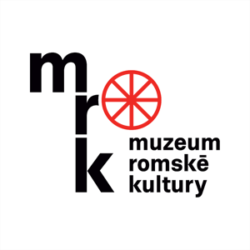Andrej Kešel
Andrej Kešel, born 1913, Michalovce
-
Testimony abstract
Andrej Kešel had only fragmentary memories of the time before the war. Before he was taken off to the camp he and his father used to dig ditches to plant trees for a farmer.
Andrej Kešel described how the local commissar was angry with the Roma and that everyone in the parish stuck by the Germans. They reported the Roma to the gendarmes who in 1940 surrounded the house and took him away with three other men to Michalovce [Kešel had the wrong date here; conscription to the labour camps did not begin until 1942 (ed.)]. The other three Roma were released for health reasons but Andrej Kešel ended up in the labour camp Revúca. According to him there were roughly the same number of Roma and non-Roma prisoners in Revúca; there was a Catholic priest there, who was forced to sing by the others. He remembered the hunger, the bedbugs, the hard work moving stones when they were building the track and the continual beating and bullying; he mentioned too that they did not send any money to the women at home. He fled home but the gendarmes came for him and beat him, twenty five lashes on each of his hands and feet. When he went back to work his hands hurt too much to hold the pickaxe, and one Roma[1] told the gendarme that Kešel did not want to work. The non-Roma gendarme[2] took him somewhere where they couldn’t be seen and told him to lean on his shovel and pretend he was working. Kešel was later moved to a labour camp in the parish of Bystré, where the conditions were, in his own words, easier to bear.
Andrej Kešel mentioned two experiences from when he was still living in Slovakia after the war. Once he was sitting with his father and other Roma in a pub drinking beer when the commissar responsible for him ending up in the camp came in. Andrej Kešel’s father told him that now it was their turn. He opened the door and threw the commissar out of the pub. Another time the local farmer paid Andrej Kešel for his diligent work with wood, but the non-Roma innkeeper immediately accused him of theft and beat him. However, the gendarmes believed him and let him go. There were good gadjos and bad, Kešel remembers. According to him at the present time too [in Most, in Bohemia] there are good gadjos and bad – many with the Roma and many against them.
How to cite abstract
Abstract of testimony from: HÜBSCHMANNOVÁ, Milena, ed. “Po židoch cigáni.” Svědectví Romů ze Slovenska 1939–1945.: I. díl (1939–srpen 1944). 1. Praha: Triáda, 2005. ISBN 80-86138-14-3, 486-490 (ces), 491-495 (rom). Testimonies of the Roma and Sinti. Project of the Prague Forum for Romani Histories, https://www.romatestimonies.com/testimony/andrej-kesel (accessed 12/7/2025) -
Origin of Testimony
Andrej Kešel, at that time eighty years old, was interviewed in the autumn of 1993 in his relatives’ home in Most-Chanov in the presence of his children and extended family, and of two Swedish film documentary makers,[1] who were searching for witnesses of the genocide of the Roma in Europe during World War II.
- [1] Names not given.
-
Where to find this testimony




